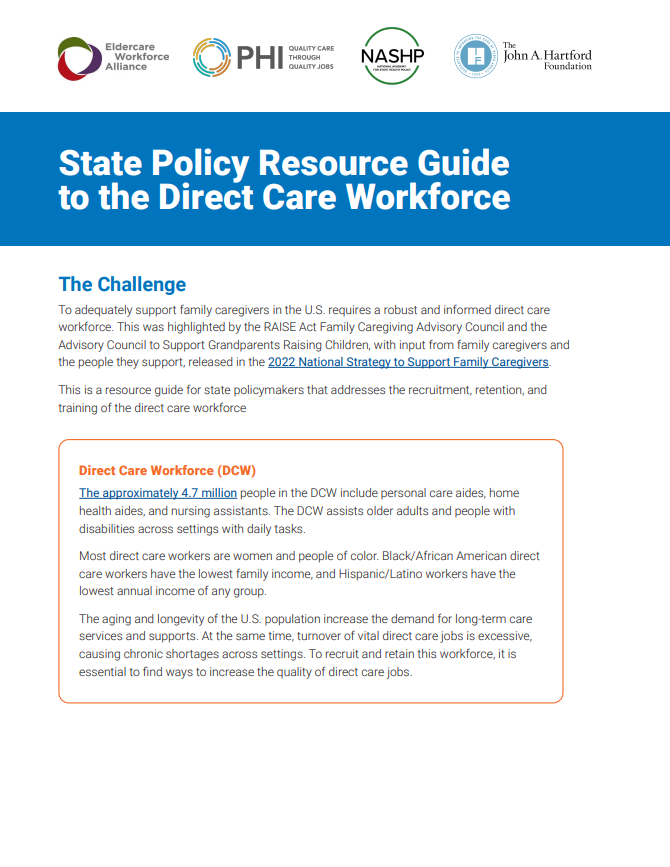Headline
State policy recommendations to improve the recruitment, retention, and training of the direct care workforce.
Context
The direct care workforce (DCW), including personal care aides, home health aides, and nursing assistants, plays a critical and yet often overlooked component of the U.S. health care system. This workforce is instrumental in enabling numerous older adults and individuals with disabilities to maintain their independence in community-based settings by providing crucial assistance with daily tasks. The recruitment and retention of the DCW is an especially significant policy challenge given the expected increase in the number of individuals needing home-based care in the coming years. Additionally, ensuring that the DCW are compensated fairly and connected to other important resources is a critical equity issue — care workers are disproportionately likely to be women and people of color.
State governments are well positioned to address these challenges. This report, developed as part of the 2022 National Strategy to Support Family Caregivers, offers recommendations for how state governments can improve the recruitment, retention, and training of the DCW.
Findings
The report provides five key policy recommendations for states seeking to strengthen the DCW: (1) increase compensation; (2) improve and streamline training; (3) develop career pathways; (4) invest in research and data collection; (5) advance collaboration between providers, employees, and state government. To facilitate greater connections between the DCW and family caregivers, the report identifies the following key strategies: (1) strengthen matching service registries; (2) promote care integration; and (3) support family caregiver and workforce education.
In addition to providing an overview of each recommendation, the report offers further practical guidance through illustrative examples of state policy actions (e.g., Utah’s use of American Rescue Plan Act funding to address the DCW shortage). The report also links to the Direct Care Workforce State Index, which offers a comprehensive state-by-state overview of levels of DCW investment and support.
Takeaways
This resource offers actionable recommendations for state governments to support the recruitment, retention, and training of the DCW. Many of the recommendations are framed in the context of supporting family caregivers along with the DCW, a critical recognition of the intersection between the needs of members of the DCW, family caregivers, and individuals with functional limitations.




